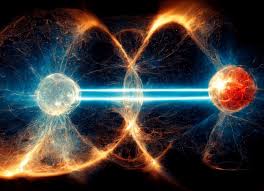Recent breakthroughs in nuclear fusion research, especially in the US and UK, have sparked optimism for a clean energy future. China’s significant investments in fusion technology have positioned it as a leading contender in the global push for commercialization.
Despite ongoing challenges, the potential of nuclear fusion—offering abundant, clean energy—has made it a key objective for many nations. Scientists have been striving for decades to achieve nuclear fusion for commercial applications that can provide a sustainable energy source. Notable advancements in the past few years have shown promise, but many experts believe there is still a considerable journey ahead before the technology is ready for widespread use. Meanwhile, China’s robust investment in fusion research could give it a competitive edge in the years to come.
Governments and private entities have invested heavily in nuclear fusion research over the decades. This is largely due to fusion’s potential to generate approximately four times more energy per kilogram of fuel compared to nuclear fission, the process currently utilized in power plants.
The International Energy Agency describes nuclear fusion as the process in which two light atomic nuclei combine to form a heavier nucleus while releasing vast amounts of energy. Fusion occurs in a state of matter known as plasma—a hot, charged gas consisting of positive ions and free-moving electrons. For fusion to take place, the nuclei must collide at extremely high temperatures—around ten million degrees Celsius. When they come within close proximity, the attractive nuclear force overcomes electrical repulsion, allowing them to fuse.
In December 2022, American scientists at the National Ignition Facility (NIF) in California achieved a significant milestone in nuclear fusion. During an experiment, they generated more energy than was input. This involved placing a tiny amount of hydrogen into a capsule the size of a peppercorn and bombarding it with a 192-beam laser, heating and compressing the fuel. The capsule reached around 100 million degrees Celsius and was compressed to over 100 billion times the Earth’s atmospheric pressure, leading to the implosion necessary for hydrogen atoms to fuse and release energy. The energy input was 2.05 megajoules, resulting in an output of 3.15 megajoules of fusion energy. Following this success, NIF scientists replicated the experiment with similar results.
In 2024, scientists at the UK’s JET laboratory recorded the highest energy production through fusion ever achieved, culminating four decades of research. While this represented a significant advance, the team cautioned about the hurdles to commercializing nuclear fusion technology. “To achieve fusion on Earth, we need temperatures ten times hotter than the Sun—around 100 million Celsius—and sufficient atomic density maintained for a prolonged duration,” explained Dr. Aneeqa Khan, a Research Fellow in Nuclear Fusion at the University of Manchester.










